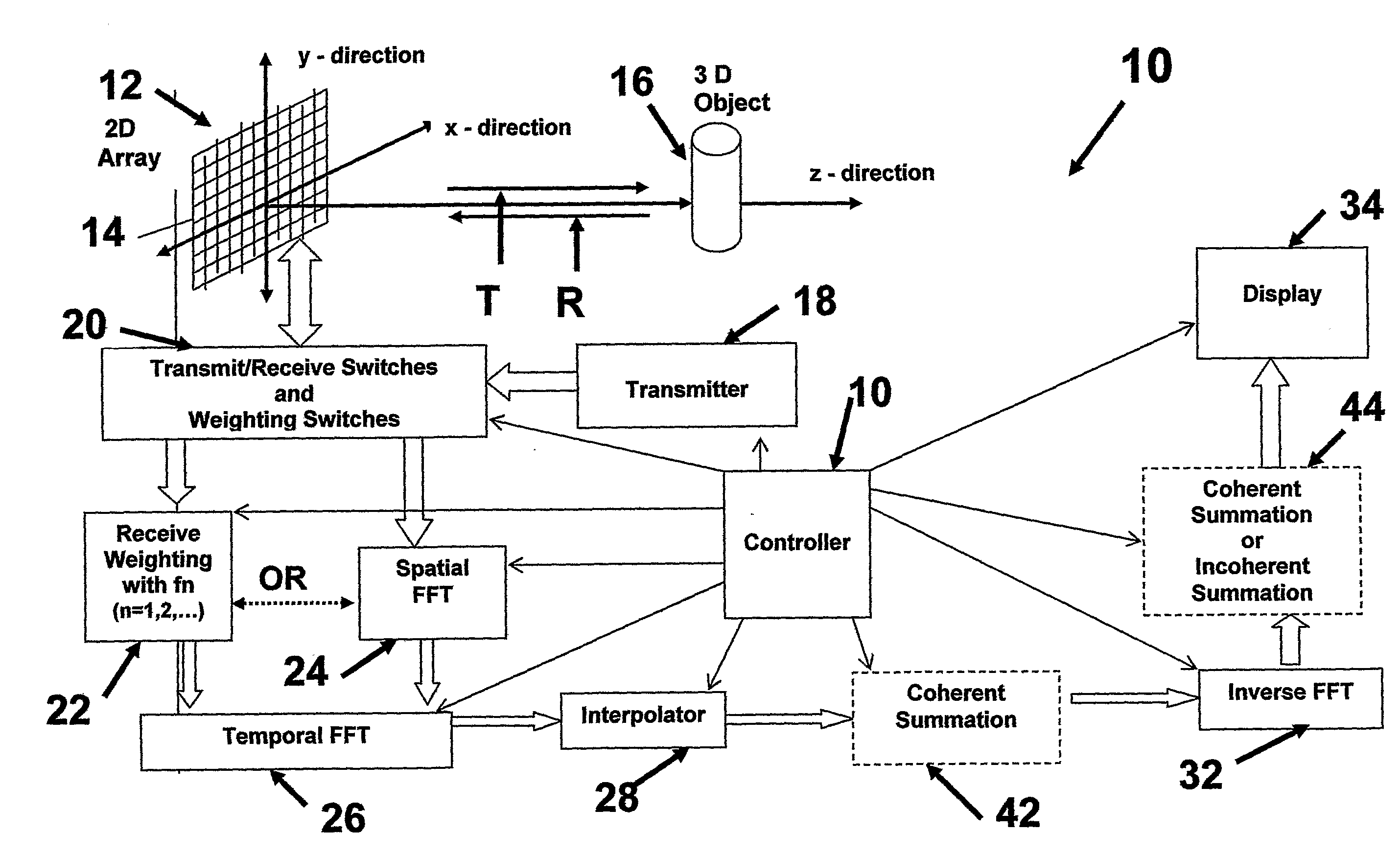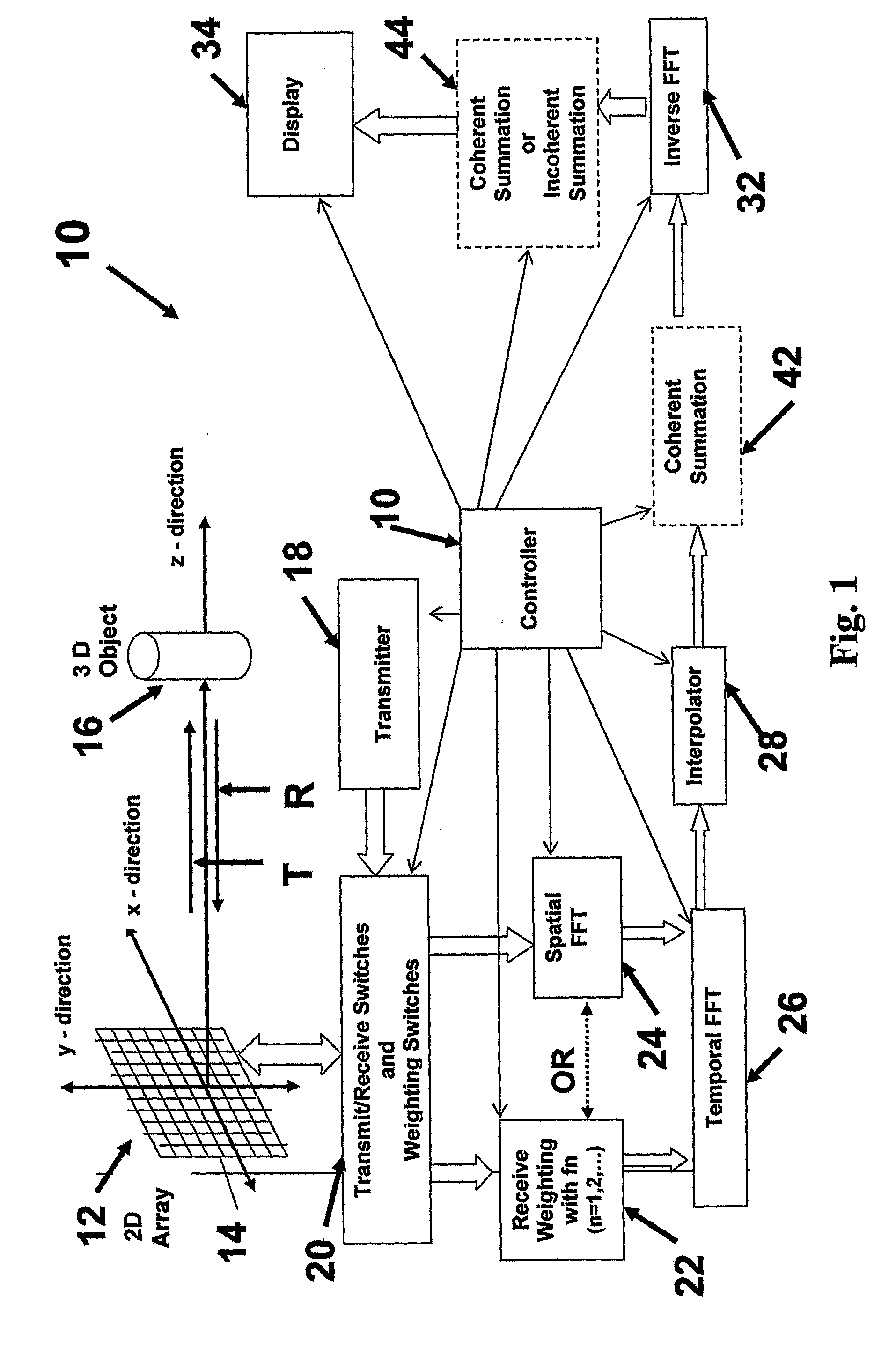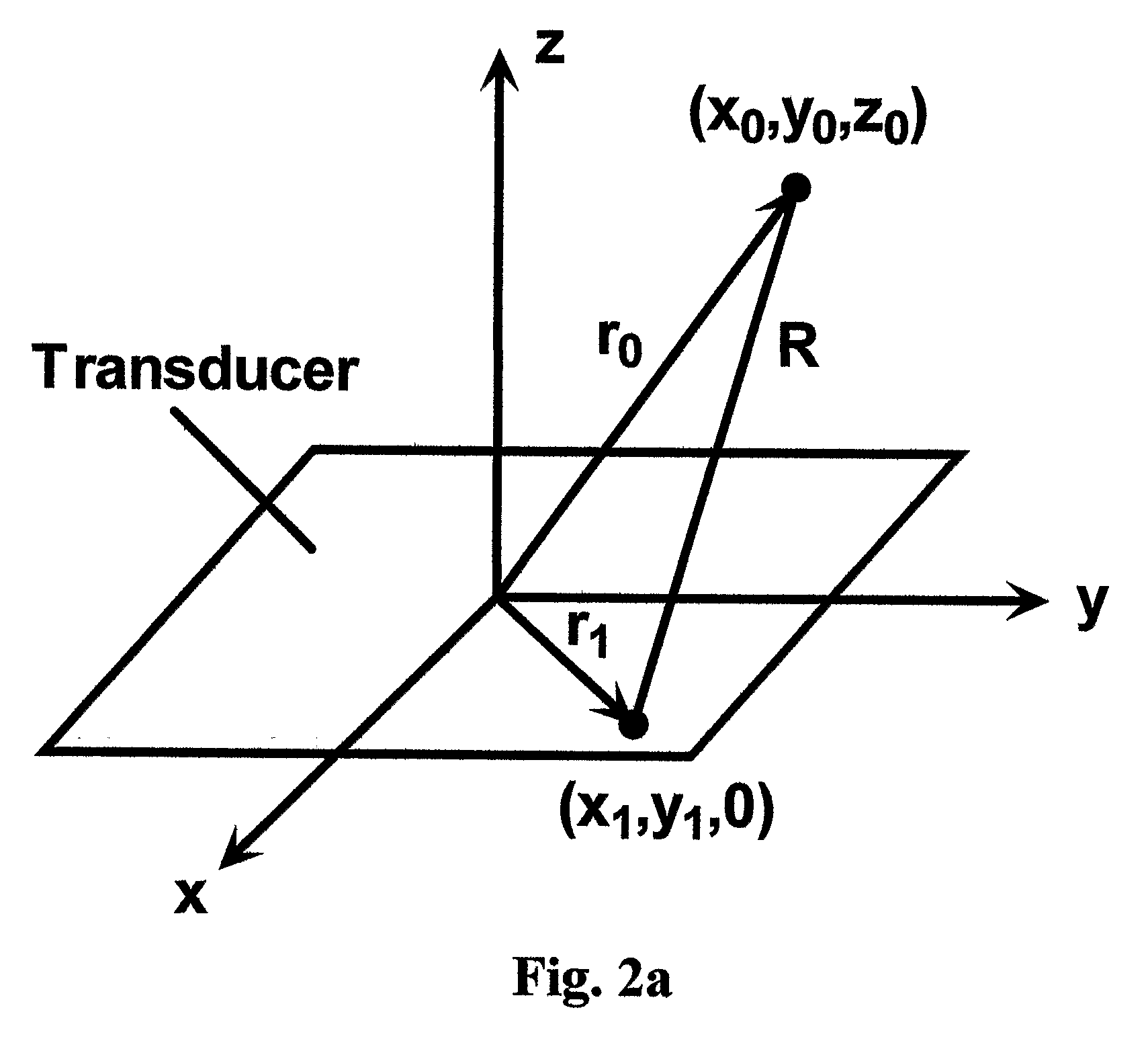System for extended high frame rate imaging with limited-diffraction beams
a high frame rate, limited beam technology, applied in the field of multi-dimensional image production systems, can solve the problems of reducing computation efficiency, low signal-to-noise ratio (snr), and not aiming at increasing the frame rate of conventional b-mode images, and achieves high frame rate, high contrast, and high resolution.
- Summary
- Abstract
- Description
- Claims
- Application Information
AI Technical Summary
Benefits of technology
Problems solved by technology
Method used
Image
Examples
example a
Mathematical Examples
[0191]To verify the extended HFR imaging theory in ideal conditions, computer simulations were performed. For simplicity, only 2D imaging will be considered. The simulation algorithms are developed based on the impulse response methods.
[0192]In the simulations, a 128-element, 1D linear array transducer of 3.5 MHz center frequency and 58%-6 dB pulse-echo fractional bandwidth defined bus the square of the Blackman window function is assumed. A one-cycle sine wave pulse at the center frequency of the transducer is used to excite the transducer. The dimensions of the transducer are 0.32 mm (pitch), 8.6 mm (elevation width), and 40.96 mm (aperture length), respectively. The pitch is about ¾ of the center wavelength of the transducer. There is no elevation focus for the transducer.
[0193]Two objects are used in the simulations. One is based on the wire pattern of the ATS539 (ATS Laboratories, Inc.) multipurpose tissue-mimicking phantom (see imaging Area I and the posit...
examples b and c
[0201]To test the extended HFR imaging theory in practical situations, both in vitro and in vivo experiments are carried out with a homemade high frame rate (HFR) imaging system.
[0202]Example System and Conditions
[0203]A HFR imaging system was designed and constricted in our lab and was used for all the experiments. Tins system has 128 independent, wideband (0.05 MHz-10 MHz) arbitrary waveform generators (power amplifiers), and each of them has a 40 MHz 12-bit D / A as its input and produces up to ±144V output at a 75Ω load. The system also has 128 independent receiving channels, and each has a low-noise time-gain-control (TGC) amplifier of up to 108 dB gain and 10 MHz bandwidth (0.25 MHz-10 MHz) Each channel also has a 12-bit A / D of 40 MHz sampling rate and an SDRAM of up to 512 MB for storing digitized echo signals. Data are transferred through a USB 2.0 (high-speed) link to a PC for image construction. The system operation is controlled by the PC using ...
example b
In Vitro Examples
[0205]In the in vitro experiments, the same array, transducer as in the simulations is used, except that the real transducer has a bandwidth of about 50%, instead of 58% of the center frequency. Other imaging parameters for the experiments are also the same as those in simulations. To show the line spread function of the imaging methods, a homemade wire phantom consisting of six nation wires (0.25 mm in diameter) in a line with an inter-wire spacing of 20 mm is used and images constructed with limited-diffraction array beam and steered plane wave transmissions are shown in FIGS. 7 and 8, respectively. (There is one more wire in the third row that is 20 mm away from the line.)
[0206]To show how image frame rate trades off with improved image quality, results for 1 (up to 5277 frames / s with a speed of sound of 1477.56 m / s, Panel (a)), 11 (up to 479 frames / s. Panel (b)), 19 (up to 278 frames / s, Panel (c)), and 91 (up to 58 frames / s, Panel (d)) transmissions are obtained...
PUM
 Login to View More
Login to View More Abstract
Description
Claims
Application Information
 Login to View More
Login to View More - R&D
- Intellectual Property
- Life Sciences
- Materials
- Tech Scout
- Unparalleled Data Quality
- Higher Quality Content
- 60% Fewer Hallucinations
Browse by: Latest US Patents, China's latest patents, Technical Efficacy Thesaurus, Application Domain, Technology Topic, Popular Technical Reports.
© 2025 PatSnap. All rights reserved.Legal|Privacy policy|Modern Slavery Act Transparency Statement|Sitemap|About US| Contact US: help@patsnap.com



